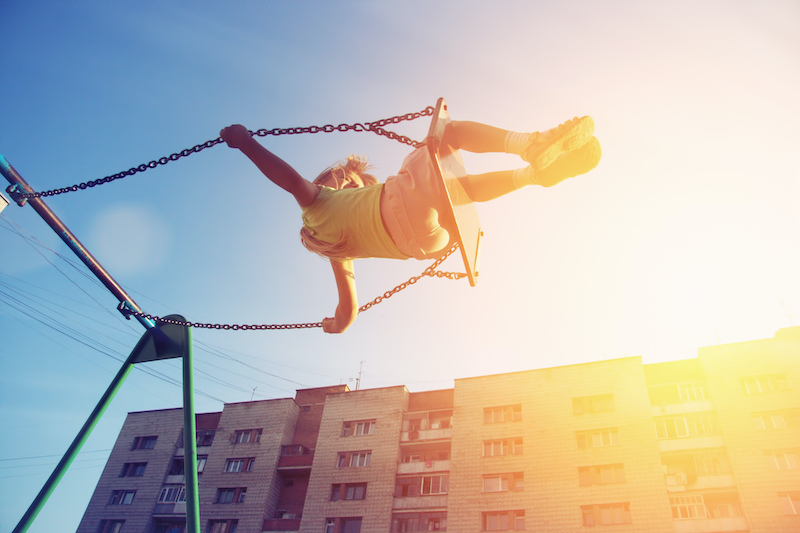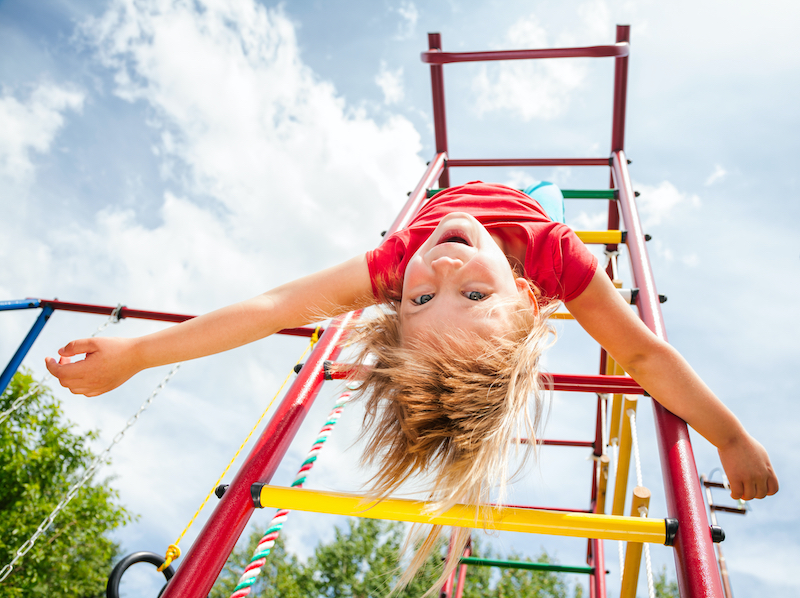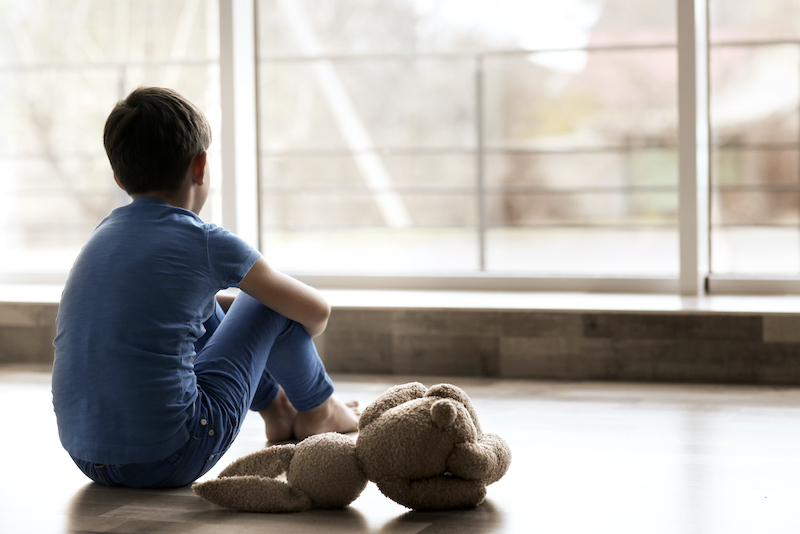

Last Updated on January 6, 2022
“Fortune favors the brave.”
Life is, essentially, one considerable risk.
It’s something we’re all so familiar with, though, that we don’t see how every choice we make—no matter how seemingly inconsequential—creates a ripple effect that shapes our personalities and our futures.
We may not even recognize just how dangerous (or risky) certain choices might be.
That is until we have children.
That’s when every minor hazard, stumbling block, or personal setback becomes some sort of larger-than-life obstacle with the power to destroy all we hold dear.
And as a parent, protecting your child from harm is your top priority.
It’s instinctual.
It’s natural.
And it’s something most parents put above their own safety.
There isn’t much a loving mother or father wouldn’t do to ensure their kids live long, happy, pain-free lives.
Maybe it has something to do with humanity’s inherent desire to protect those that are most vulnerable—to preserve their innocence and spare their suffering.
Oh, what a place the world would be if we could protect every child from every misfortune, struggle, and mistreatment. Unfortunately, this sort of consummate utopia just isn’t in the cards. And it’s not just an unlikely scenario—it’s a downright impossibility.
But that isn’t necessarily a bad thing.
Many experts believe learning to take measured risks is a valuable part of every kid’s physical and emotional development.
One study from Columbia University examined risk-taking and associated outcomes using an exploration-based instrumental learning task. In the end, they found that individuals with high associative sensitivity modified their behavior to improve results.
Which is really just a super scientific way of saying that taking risks appears to help young people make smarter, more-informed decisions based on past experiences.
And these informed decisions ultimately yield better outcomes.
Yet, despite the benefits, there are several reasons why kids might shy away from taking risks:
But raising kids who understand the value of taking risks is a primary component of what it means to set them up for long-term success.
Some even believe taking risks now—today—leads to a greater sense of overall satisfaction later in life.
According to Forbes Magazine, many retired people report wishing they’d been more assertive, taken more risks, and used their voice more often throughout their lifetimes.
So, if risk-taking behavior is so crucial, how do we teach this skill while our kids are still young?
And how do we teach them the difference between responsible risk-taking and poor decision-making?
You might find the answers are far less complicated than you might already believe.

Even failure—or a scraped knee—can teach children a lot about their capabilities and limitations.
And many children who learn to take risks when they’re young, generally grow to be incredibly well-adjusted, successful adults.
But there’s a significant difference between a responsible, calculated risk and an impulsive, reckless decision.
“(A good risk) is an action, activity, or behavior that, precipitated by careful thought, involves a ‘leap’ toward the edge of safety and danger,” says Susan Davis, Ph.D. and co-author of the book, Raising Children Who Soar: a Guide to Healthy Risk-Taking in An Uncertain World.
Positive risks offer clear benefits, are socially acceptable, and do not present severe consequences. Some things that could be considered positive risks are:
Negative risks may be harmful to others, are socially unacceptable, or may have severe consequences with minimal upside.
While this distinction may seem fairly obvious to most adults, kids have difficulty understanding what makes one risk beneficial and another dangerous.
Fortunately, behavioral experts and child psychologists believe that positive risk-taking behavior can be taught.
One specific strategy is teaching kids to ask themselves a series of five simple questions when trying to determine if the risk they’re considering is worth taking:
It’s all about thinking things through. Suppose the answer to the first three questions is no. In that case, they probably believe in their reasoning, and they’re emotionally capable of working through the potential consequences, so this just might be a risk your child should take.
If your kids can wrap their heads around this specific concept, they’ll learn how smart risks can lead to more success, deeper relationships, and more rewarding experiences.

Without guidance, children might take risks that result in serious, long-term consequences.
Teenagers, in particular, often find themselves in risky situations that have little to no upside. That’s usually because they’ve hit a point where branching out, testing boundaries, and impressing their friends are at the top of their list of priorities.
And while this is all part of growing up, the areas of the brain that control decision-making haven’t fully developed, making young people less likely to think before they act.
They ditch school. They drive recklessly. They challenge authority.
It’s this impulsive behavior that gets them in trouble.
But that’s just one end of the spectrum.
On the other end, you have children who rarely step outside their comfort zone and try something that scares them a little bit.
They stick to the familiarity of routine. They never stray far from their parents’ watchful eyes. They refuse to push themselves.
This study, published by the US National Library of Medicine, finds that the anticipation of fear is the greatest contributor to this level of risk avoidance.
But it’s not just about fear.
Overprotective parents often hold their children back from practicing taking risks.
It’s all well-intentioned—they’re just trying to make sure their children experience as little pain, discomfort, and disappointment as possible—but it might cause more harm than good.
Current findings suggest that heightened anxiety may be linked to risk-avoidant behavior. The interesting thing here is that avoidance and anxiety seem to feed each other in a cyclical fashion: avoidance breeds anxiety while anxiety breeds avoidance.
It’s a bit of a “Chicken or the egg” paradox, but the fact remains the two are inextricably linked.
Experiencing occasional anxiety is a normal part of life, of course. But anxiety disorders are far more intense, causing excessive and persistent worry and fear about everyday situations. Left untreated, these feelings can become overwhelming, particularly for young children.
Here are some common signs and symptoms associated with anxiety:

Studies have shown that confident kids experience tremendous benefits: Improved academic performance, less anxiety, and healthier relationships, just to name a few. But where does confidence come from, exactly?
Many would argue it comes from trust.
When children trust that their parents believe in their ability to assess risk and manage the outcomes, they reach entirely new levels of confidence. That’s because it gives them the freedom to tackle—and overcome—challenges all on their own.
And that teaches them independence.
Take all those opportunities away, and all children ever know is self-doubt.
As children grow, this lack of confidence can dramatically affect academic performance, career opportunities, and relationships. And when that happens, they might lose their voice, doubting their thoughts, actions, and opinions.
The worst thing that happens when parents practice the helicopter approach—never letting their children fail or make mistakes—is that these kids grow up woefully underprepared for life as adults. Because they’ve never had the chance to solve problems on their own, they don’t know how to navigate many everyday situations.
This means they don’t fully understand how to evaluate risk vs. reward, and that lack of understanding holds them back.
In fact, employers report that contributors who take regular risks tend to receive more recognition, earn more promotions, and make more money than those who always play it safe.
In other words, successful adults aren’t afraid to fail.
In theory, every decision children make carries a certain amount of risk. The less freedom they have to make various choices on their own, the more likely they are to act impulsively.
Or, in some cases, they may even find themselves caught in a web of indecision.
Impulsivity and indecision are almost polar opposites, but they’re both harmful in their own ways.
Impulsivity—A tendency to act without thinking that may lead to undesired consequences.
Indecision—An inability to make simple choices in daily life that results in negative outcomes.
We’ve covered all the scary stuff. We’ve talked about the benefits of responsible risk-taking, the difference between positive and negative risks, and the consequences of always playing it safe.
Now it’s time to talk about what you can do to teach your kids the value of taking smart, responsible risks.
We all need connection. And from birth, we’re wired to respond to warm, empathetic communication. It makes us feel safe. Secure.
And like most everything in life, responsive communication takes practice. If you truly want your kids to develop responsible risk-taking skills, you have to make space for open dialogue. Not only will they learn valuable lessons, but it’ll strengthen your bond, too.
This means, as a parent, you have to be intentional in your approach.
While structure, definitive boundaries, and clear rules are super important when it comes to parenting, listening to your kids and responding to their curiosity is just as critical.
Here are a few tips to consider before you sit down to talk with your kids about what it means to take measured risks:
It’s a big world out there. And while, as a parent, it’s probably easier to spot the potential dangers lurking in every corner, everyday life is absolutely bursting with opportunities for risk-friendly play.
Take a look around and you’ll see the world around is like one big playground.
Here’s a few examples of risk-embracing play that you might want to consider:
Conquer Heights: Let your kids climb trees, scale playground equipment, and ascend walls.
Embrace Speed: There’s nothing quite like the rush of cruising downhill at high speeds. Sledding, skiing, and bike riding are all great ways to acquaint your kids with their need for speed.
Play in Bodies of Water: Teaching your kids how to swim is an incredible gift. As they grow, they can tread water in lakes, float down rivers, and even test their diving skills in the deep end of your local pool.
Get Rowdy: Physical play is a great way to assess abilities and limitations in a controlled environment. Create a safe space where your kids can rough house with their friends or siblings. Or, if you prefer, get them involved in sports.
Encourage Independence: Sometimes the simplicity of independent play is enough to give small children a thrill. Let them branch out and explore—it’ll engage their brains and unleash their creativity.

We’ve said this before, but your children are always watching you. And they often model their own behavior after what they see in the home.
That’s why you need to put in a little effort to break from your standard routine and shake things up a bit. We’re not talking about quitting your job on an impulse—that would just be irresponsible—but maybe take a risk and approach your boss about a potential promotion or raise.
If a young child watches their mom and dad stand up for themselves and fight for what they deserve, they’ll learn what it means to never settle just because it feels safe.
You can take smaller risks, too.
Maybe cook a meal you’ve never prepared before or learn to play a musical instrument. Or maybe even gather the whole family and go on an adventure together—experience something new as a unit.
All these options paint a picture of healthy risk-taking behavior.
We know it’s hard, but you don’t always have to be (overly) involved when your kids are running wild with their friends in the backyard. Whether they’re building forts, slaying dragons, or hunting for buried treasure, free play gives children the freedom to make their own rules—all without adult interference.
And it’s a great way for children to experiment with both social and physical risks by exploring boundaries, testing limits, and learning how to solve problems and disagreements.
Next time you feel the urge to insert yourself in the middle of a playdate, take a step back and watch from a respectable distance. As kids develop their own social skills in this area, you’ll find their creativity thrive and their confidence soar.


